Juno spacecraft slingshots past Earth on its way to Jupiter
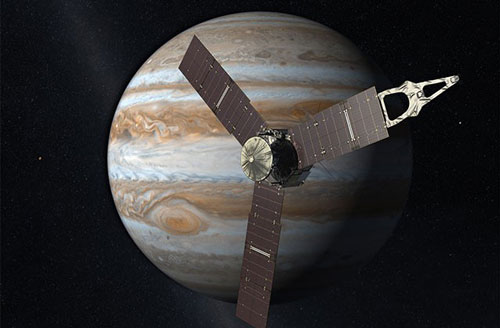 NASA's Juno spacecraft will be passing within some 350 miles of Earth's surface Oct. 9 before it slingshots off into space on an historic exploration of Jupiter.
NASA's Juno spacecraft will be passing within some 350 miles of Earth's surface Oct. 9 before it slingshots off into space on an historic exploration of Jupiter.
Oct 8th, 2013
Read more
 Subscribe to our Space Exploration News feed
Subscribe to our Space Exploration News feed
 NASA's Juno spacecraft will be passing within some 350 miles of Earth's surface Oct. 9 before it slingshots off into space on an historic exploration of Jupiter.
NASA's Juno spacecraft will be passing within some 350 miles of Earth's surface Oct. 9 before it slingshots off into space on an historic exploration of Jupiter.
Oct 8th, 2013
Read more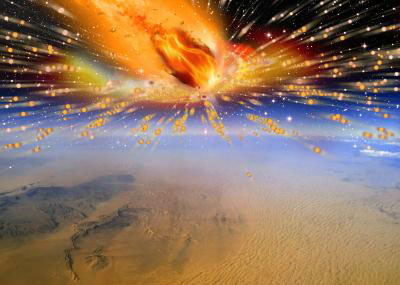 The first ever evidence of a comet entering Earth's atmosphere and exploding, raining down a shock wave of fire which obliterated every life form in its path, has been discovered by a team of South African scientists and international collaborators.
The first ever evidence of a comet entering Earth's atmosphere and exploding, raining down a shock wave of fire which obliterated every life form in its path, has been discovered by a team of South African scientists and international collaborators.
Oct 8th, 2013
Read more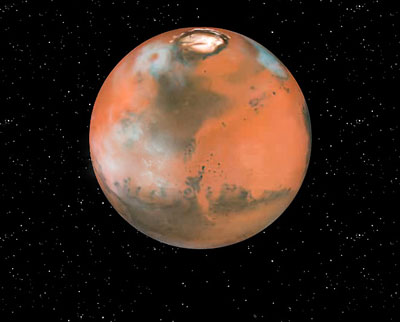 Cloud-chamber experiments show that clouds on Mars form in much more humid conditions than clouds on Earth.
Cloud-chamber experiments show that clouds on Mars form in much more humid conditions than clouds on Earth.
Oct 8th, 2013
Read more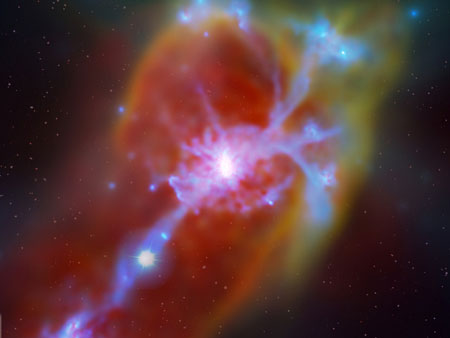 Astronomers observe distant galaxy powered by primordial cosmic fuel.
Astronomers observe distant galaxy powered by primordial cosmic fuel.
Oct 7th, 2013
Read more A high performance terahertz receiver aiming for space missions such as ESA's 'Jupiter icy moons explorer' has been developed in a joint European effort, led by Chalmers University of Technology.
A high performance terahertz receiver aiming for space missions such as ESA's 'Jupiter icy moons explorer' has been developed in a joint European effort, led by Chalmers University of Technology.
Oct 7th, 2013
Read more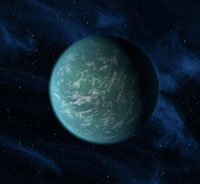 An EU-funded project is developing direct methods for actually acquiring an image of planets. We could soon be one step closer to answering the age-old question of whether life exists on any other planet beyond Earth.
An EU-funded project is developing direct methods for actually acquiring an image of planets. We could soon be one step closer to answering the age-old question of whether life exists on any other planet beyond Earth.
Oct 4th, 2013
Read more Next week will see ESA's most ambitious planetary rover test yet. Robotic exploration of a Mars-like desert in South America will be overseen from the UK, providing experience for future missions to the Red Planet.
Next week will see ESA's most ambitious planetary rover test yet. Robotic exploration of a Mars-like desert in South America will be overseen from the UK, providing experience for future missions to the Red Planet.
Oct 4th, 2013
Read more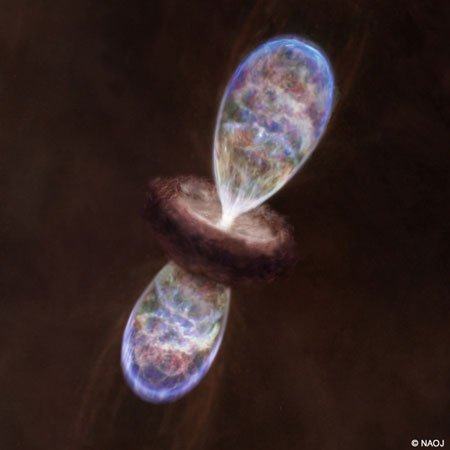 An international research team, led by researcher at the University of Electro-Communication observed an infrared dark cloud G34.43+00.24 MM3 with ALMA and discovered a baby star surrounded by a large hot cloud. This hot cloud is about ten times larger than those found around typical solar-mass baby stars.
An international research team, led by researcher at the University of Electro-Communication observed an infrared dark cloud G34.43+00.24 MM3 with ALMA and discovered a baby star surrounded by a large hot cloud. This hot cloud is about ten times larger than those found around typical solar-mass baby stars.
Oct 4th, 2013
Read moreThe nearby star system Fomalhaut - of special interest for its unusual exoplanet and dusty debris disk - has been discovered to be not just a double star, as astronomers had thought, but one of the widest triple stars known.
Oct 4th, 2013
Read moreA new look at the early solar system introduces an alternative to a long-taught, but largely discredited, theory that seeks to explain how biomolecules were once able to form inside of asteroids.
Oct 1st, 2013
Read moreA small satellite designed and built by a team of University of Colorado Boulder students to better understand how atmospheric drag can affect satellite orbits was successfully launched from Vandenberg Air Force Base in California Sunday morning.
Oct 1st, 2013
Read more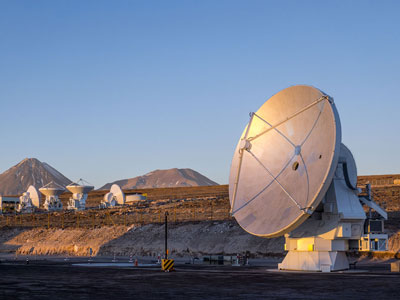 The final antenna for the Atacama Large Millimeter/submillimeter Array (ALMA) project has just been handed over to the ALMA Observatory. The 12-metre-diameter dish was manufactured by the European AEM Consortium and also marks the successful delivery of a total of 25 European antennas.
The final antenna for the Atacama Large Millimeter/submillimeter Array (ALMA) project has just been handed over to the ALMA Observatory. The 12-metre-diameter dish was manufactured by the European AEM Consortium and also marks the successful delivery of a total of 25 European antennas.
Oct 1st, 2013
Read more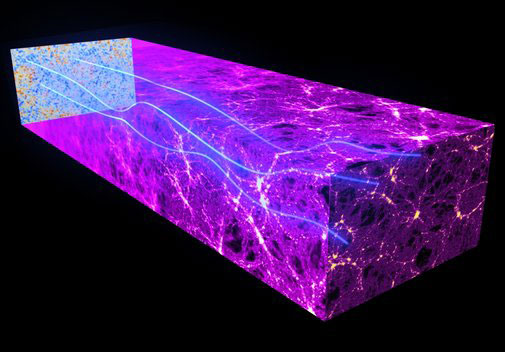 Using a telescope in Antarctica and ESA's Herschel space observatory, astronomers have made the first detection of a subtle twist in the relic radiation from the Big Bang, paving the way towards revealing the first moments of the Universe's existence.
Using a telescope in Antarctica and ESA's Herschel space observatory, astronomers have made the first detection of a subtle twist in the relic radiation from the Big Bang, paving the way towards revealing the first moments of the Universe's existence.
Oct 1st, 2013
Read moreA new study reveals that according to observations made by the NASA rover Curiosity, the surface layer of the Gale crater near the Martian equator has a water content of about two percent, which is at the lower end of previous estimates.
Oct 1st, 2013
Read moreAstronomers using data from NASA's Kepler and Spitzer space telescopes have created the first cloud map of a planet beyond our solar system, a sizzling, Jupiter-like world known as Kepler-7b.
Sep 30th, 2013
Read moreNASA's Cassini spacecraft has detected propylene, a chemical used to make food-storage containers, car bumpers and other consumer products, on Saturn's moon Titan.
Sep 30th, 2013
Read more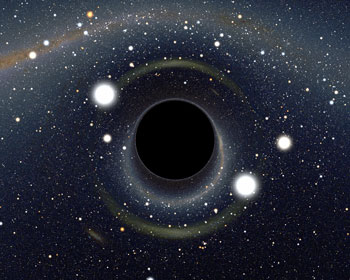 A black hole. A simple and clear concept, at least according to the hypothesis by Roy Kerr, who in 1963 proposed a 'clean' black hole model, which is the current theoretical paradigm. From theory to reality things may be quite different. According to a new research, black holes may be much 'dirtier' than what Kerr believed.
A black hole. A simple and clear concept, at least according to the hypothesis by Roy Kerr, who in 1963 proposed a 'clean' black hole model, which is the current theoretical paradigm. From theory to reality things may be quite different. According to a new research, black holes may be much 'dirtier' than what Kerr believed.
Sep 30th, 2013
Read more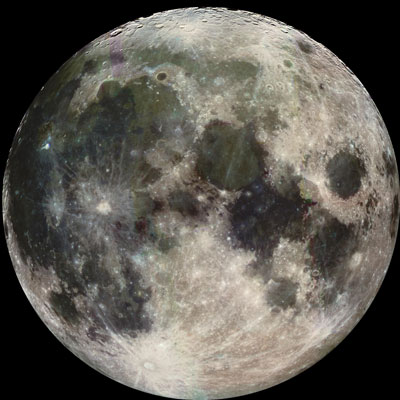 Google Lunar XPRIZE has announced the line-up for its Judging Panel: eight international experts with experience from iconic space missions including Apollo, the Hubble Space Telescope, the Huygens probe to Titan, the Swift gamma-ray burst mission and the Curiosity Mars rover.
Google Lunar XPRIZE has announced the line-up for its Judging Panel: eight international experts with experience from iconic space missions including Apollo, the Hubble Space Telescope, the Huygens probe to Titan, the Swift gamma-ray burst mission and the Curiosity Mars rover.
Sep 30th, 2013
Read more